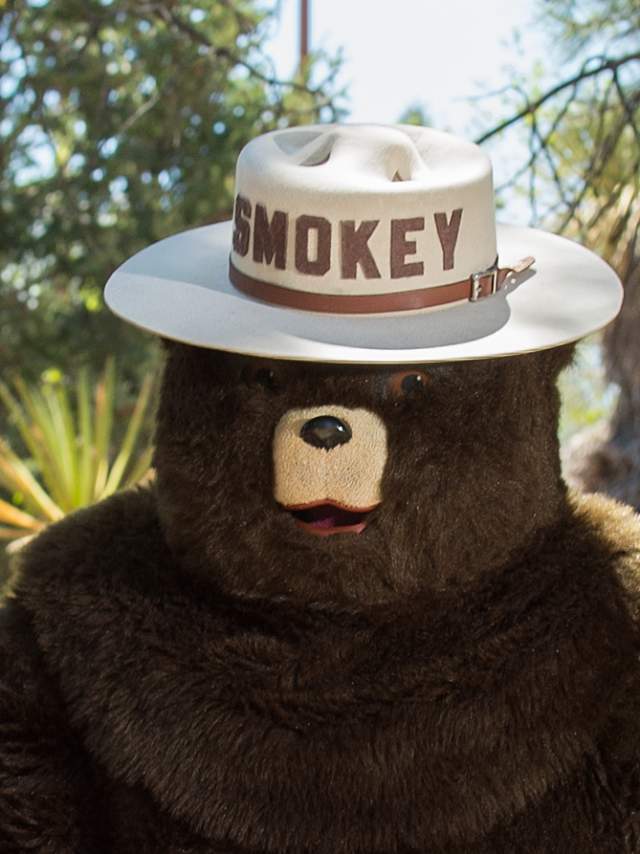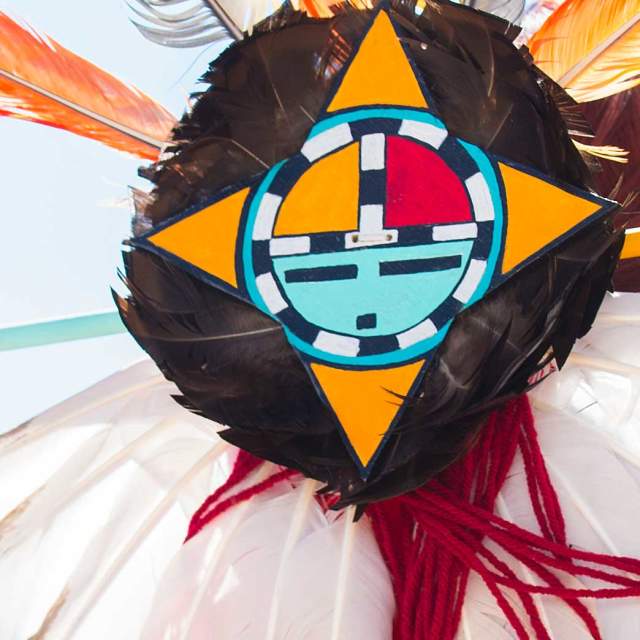Facts, Superlatives & Rankings
A visit to New Mexico is truly unlike anything you’ve experienced. Adventures steeped in culture start with the history, landscape and personality of the state. These facts, superlatives and rankings are just a start to unearthing the unique perspectives rewarded from a trip to The Land of Enchantment.
Press Room | Press Releases | Story Ideas | Awards & Accolades | What's New | Media Requests | Press Trips
REGION FAST FACTS
NEW MEXICO
- Three of the U.S.’s 23 UNESCO World Heritage sites are in New Mexico – Carlsbad Caverns National Park, Chaco Culture and Taos Pueblo. New Mexico is the only state with more than two sites.
- New Mexico ranks as the nation’s fifth largest state and sixth nationally in total acreage of public lands.
- New Mexico’s 14 national monuments are the third-most among all states in the U.S.
- New Mexico is second only to Arizona in days of sunshine per year.
- One-fourth of the state is forested with seven National Forests across the state including the nation’s largest, the 3.3 million acre Gila National Forest, which includes the Gila Wilderness.
- Route 66 spans over 600 miles of the state and is listed as one of New Mexico’s Scenic and Historic Byways.
- The New Mexico state question is “Red or Green?” which refers to the option of red or green chile when ordering New Mexican food. Chile is featured in every meal from breakfast through dinner and is the No. 1 cash crop in the state as New Mexico grows more chiles than any other state with over 120,000 tons produced annually.
- The state’s elevations range from 2,871 feet at Red Bluff Lake to 13,161 on Wheeler Peak.
- New Mexico has six of the seven life zones found in the world – classified by vegetatation type and varying by altitude and orientation to the sun.
- New Mexico is known as “The State of the Arts” because it is home to more working artists, open studios, artist-owned galleries and specialty and artisan-oriented shops than any other state per capita.
- The state has five national forests, 20 national parks and monuments, 35 state parks (20 of which have lakes), 25 scenic byways and 21 wilderness areas.
- The Rio Grande, which ribbons through the state from north to south, is the fourth-longest river in the country.
- Parts of the state receive 200-300 inches a year of snow.
- Nineteen pueblos and three reservations span across the state with 22 tribes represented.
- Smokey Bear originated in New Mexico as an actual black bear cub found by firefighters from Taos Pueblo in southeastern New Mexico during the massive Capitan Gap fire of 1950.
- The Wilderness Act was signed into law in September 1964 by President Lyndon B. Johnson, with the Gila Wilderness the first official designated Wilderness Area in the nation.
- New Mexico is the only state with night light legislation enacting the Night Sky Protection Act in 1999.
- Home to the two highest elevation zipline tours in the U.S. (Apache and Angel Fire).
NORTHWEST
- New Mexico is one-quarter of the Four Corners Monument, which is the only landmark in the U.S. where four states intersect at one point.
- Chaco Culture National Historic Park dates back to 850 AD and is considered the most exceptional concentration of pueblos in the American Southwest.
- Gallup is the Indian Jewelry Capital of the World.
NORTH CENTRAL
- The Palace of Governors in Santa Fe is the oldest continuously occupied public building in the United States.
- Santa Fe is the nation’s highest elevation capital (7,000 feet) and nation’s oldest capital.
- San Miguel Chapel is the oldest standing church in the U.S. (1610).
- The Taos Pueblo is one of the oldest continuously occupied communities in the U.S. with the 900-year-old buildings still occupied.
- Taos Pueblo is the only active Native American community designated as both a UNESCO World Heritage Site and a National Historical Landmark.
- Red River has the longest summer tubing tracks in the country.
- Santa Fe has been a UNESCO Creative City since 2005 – the first city honored as such.
- The world-famous Santa Fe Opera has an open-air theater situated dramatically outside of the capital in the foothills of the Sangre de Christo Mountains.
NORTHEAST
- Las Vegas has 900 buildings in nine historic districts on the National Registry – more than any city in the United States.
- More than 500 dinosaur tracks were discovered at Clayton Lake State Park in the early 1980s. Their age is estimated at 100 million years, in the late age of dinosaurs.
- From the summit of Capulin Volcano (8,000 feet), five states can be seen: New Mexico, Colorado, Kansas, Oklahoma and Texas.
- White Sands National Monument contains the largest gypsum dune field in the world. The result of water evaporating from transitory lakes with a high mineral content, the gypsum deposits span 275 square miles.
CENTRAL
- With Albuquerque considered the “Hot Air Ballooning Capital of the World,” the Albuquerque International Balloon Fiesta has been touted as the most photographed event globally.
- The American International Rattlesnake Museum in Albuquerque is home to the largest collection of live rattlesnakes in the world.
SOUTHWEST
- The Gila National Forest is the largest in the country.
- Las Cruces holds the Guinness World Record for making the largest enchilada (done every year at the city’s Whole Enchilada Festival) using 75 gallons of red chili sauce and 750 pounds of ground corn to make the tortillas.
SOUTHEAST
- Southern New Mexico is the oldest wine-making region in the country and has been producing grapes for nearly 400 years since the arrival of Spanish colonists and their “mission” grapes.
- Hatch is known as the “Green Chile Capital of the World”
- The city of Truth or Consequences was once called “Hot Springs” before the town changed its name to the title of a popular radio quiz program in 1950.
REGION SUPERLATIVES & RANKINGS
NEW MEXICO
- Travel + Leisure: New Mexico ranks as “The Next Big Ecotourism Destination”
- The Active Times/The Huffington Post: New Mexico ranks fourth as “Unforgettable Bucket List Trips You Can Do on a Budget” (May 2016)
- Lonely Planet: Southern New Mexico one of “Best in the U.S. Top Ten”
- CNN.com: Green Chile Cheeseburger Trail one of “16 Intriguing things to see and do in the U.S. in 2016”
- The Active Times/The Huffington Post - Unforgettable Bucket List Trips You Can Do on a Budget (May 2016)
NORTHWEST
- USA Today and 10Best Reader’s Choice Travel Awards: Chaco Culture National Historic Park (No. 10) and Bandelier National Monument (No. 8) among “Top 10 Archaeological Sites in America”
- Map and atlas publisher Rand McNally named Gallup “America’s Most Patriotic Small Town”
- USAToday and 10Best Reader’s Choice Awards: Ship Rock is “America’s No. 1 Best Geological Formation”
NORTHEAST
- Town and Country Magazine: Las Vegas named “One of the Best Small Towns for Antique Shopping”
- Departures: Casa Grande at Vermejo Park Ranch, New Mexico named “Best of 2016: The 15 Most Important New Luxury Hotels”
NORTH CENTRAL
- Outside Magazine 2023 Travel Awards: Taos Ski Valley
- Travel + Leisure: Santa Fe ranked as No. 2 “The Best Cities in the U.S.” (July 2017)
- Travel + Leisure: Santa Fe ranked as No. 11 "The Best Cities in the World" (July 2017)
- Ojo Caliente and Sunrise Springs ranked as No. 3 and No. 4, respectively, "Top 10 Domestic Destination Spas" (July 2017)
- National Geographic World Legacy Award Winner - Sense of Place: Santa Fe (March 2017)
- Jetsetter: Taos, Nine Cutest Small Towns in America (May 2017)
- National Geographic: Santa Fe, America's 20 Best Mountain Biking Towns
- TripAdvisor: Most Charming Ski Vacations in America: Santa Fe and Taos
- Thrillist: Santa Fe, The (R)evelation of Steve Jobs and Meow Wolf’s “The House of the Eternal Return” listed as “15 Coolest Things Coming to U.S. Cities in 2017”
- Outside Magazine: Taos/Southwest Slopes listed as “The Best 16 Ski Destinations in the U.S.” (December 2016)
- TheRevver: Santa Fe named one of 26 “Best Motorcycle Locations in the U.S.”
- Dream Vacation Magazine: Angel Fire Resort ranked a Top 25 “Best Family Ski Resort in North America”
- Realtor.com: Angel Fire Resort ranked ninth as one of “America’s Most Affordable Ski Towns”
- Travel + Leisure: Red River ranked No. 18 on “America’s Favorite Towns”
- SpaFinder Wellness Awards: Ojo Caliente named one of the “Best Hot Springs” (November 2016)
- SpaFinder Wellness Awards: Sunrise Springs Spa & Resort named one a “Best Ahead of the Curve Innovation” (November 2016)
- American Spa Magazine: Sunrise Springs Spa & Resort named “One of the Best New Spas in the U.S.” (December 2016)
- AARP: Santa Fe named No. 1 “U.S. Cities for Art Lovers”
- Gear Patrol: Santa Fe named to “The Adventure List: 25 Best Places to Travel in 2016” (May 2016)
- Money Magazine: Santa Fe ranked No. 7 “Best Domestic Destination”
- Livability: Santa Fe ranked No. 2 as “The 10 Best Places for Wine”
- Open Table: Santa Fe “Top 25 Most Romantic Cities in America”
- Travel + Leisure: Enchanted Circle Scenic Byway among “America’s Best Fall Foliage Drives”
- Conde Nast Traveler: Santa Fe No. 5 “Best Shopping Cities in America” (September 2016)
- Conde Nast Traveler: Santa Fe No. 3 “Best Small Cities in the U.S.” (October 2016)
- Conde Nast Traveler: Santa Fe No. 8 “Friendliest Cities in the World” (August 2016)
- Thrillist.com: Santa Fe is one of “10 American Cities with the Coolest Architecture”
- Conde Nast Traveler: Santa Fe No. 2 in “Best Places to Retire in the U.S.”
- USA Today and 10Best Reader’s Choice Travel Awards: Taos ranked as top choice for “Best Ski Town” (November 2016)
- National Geographic: Taos Among “World’s Best Ski Towns”
- TripAdvisor: Taos named one of “24 Top Beautiful Little Mountain Towns Across America” (September 2016)
- U.S. News Travel: Sunrise Springs Resort in Santa Fe is one of “10 Top Wellness Retreats Around the Globe”
CENTRAL
- Women's Health & Yelp: Albuquerque among The 15 'Wellthiest' Cities in the U.S. (July 2017)
- Budget Travel: Albuquerque named one of "25 Most Beautiful Cities in America" (March 2017)
- Thrillist: Albuquerque among “The Best American Cities for Creatives” (July 2016)
- Outdoor Magazine: Albuquerque named one of the “10 Best Big Cities for Active Families” (2016)
- Redbook: Albuquerque named “No. 1 Getaway for Solo Female Travelers” (November 2016)
- Bicycling.com: A ride along the Rio Grande in Albuquerque is one of “The Most Romantic Rides in the US”
- Vagabondish.com: Albuquerque is “America’s Coolest City for Geek Travelers”
- USAToday: Albuquerque’s Southwest Chocolate & Coffee Fest a top choice in “America’s Sweetest Annual Festivals”
- Travel + Leisure: Albuquerque is No. 1 in “America’s Best Cities for Picnics”
- Travel + Leisure: Albuquerque one of “America’s Best Beer Cities” (No. 17)
- Travel + Leisure: Albuquerque one of “America’s Best Cities for Festivals” (No. 8)
- Travel + Leisure: Albuquerque one of “America’s Best Coffee Cities” (No. 4)
- Travel + Leisure: Albuquerque one of “America’s 20 Most Charming Cities”
- Budget Travel: Albuquerque one of “America’s Most Beautiful Cities”
- USAToday: Jemez Springs one of “10 Small Towns That Go All Out for Christmas”
SOUTHWEST
- Recollections.biz: New Mexico Farm & Ranch Heritage Museum one of the country’s “Top 30 Historical Preservation Societies”
- USAToday: Pie Town Pie Festival a top choice in “America’s Sweetest Annual Festivals”
SOUTHEAST






